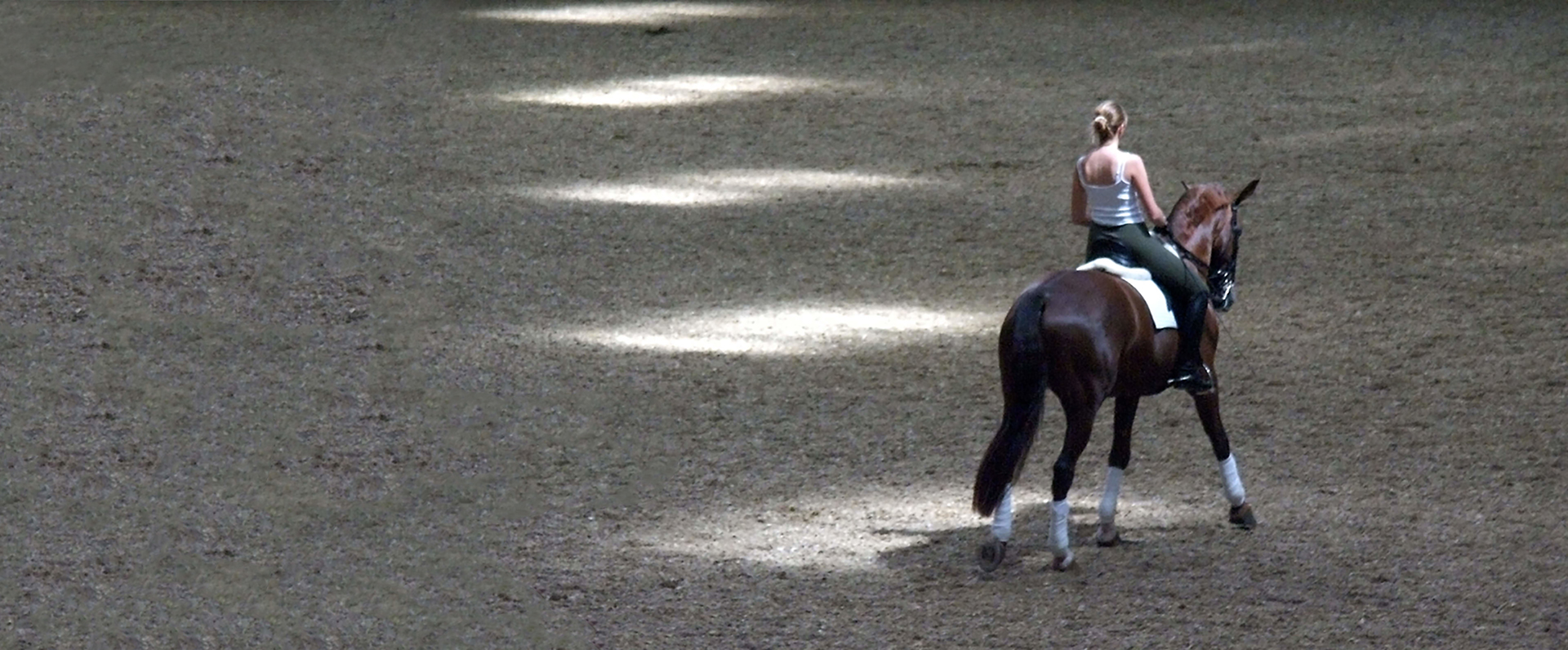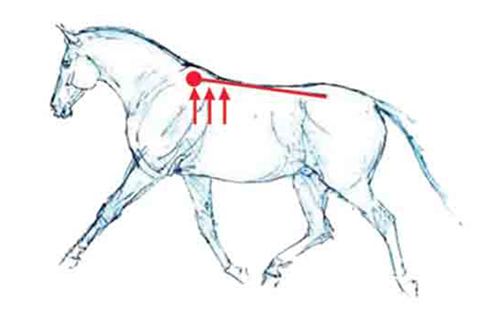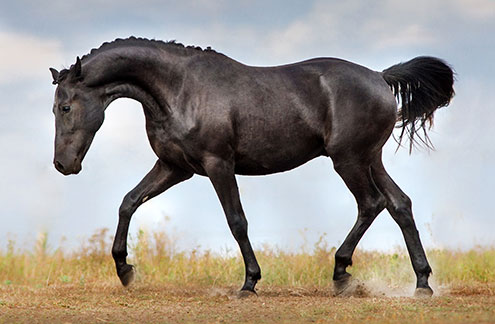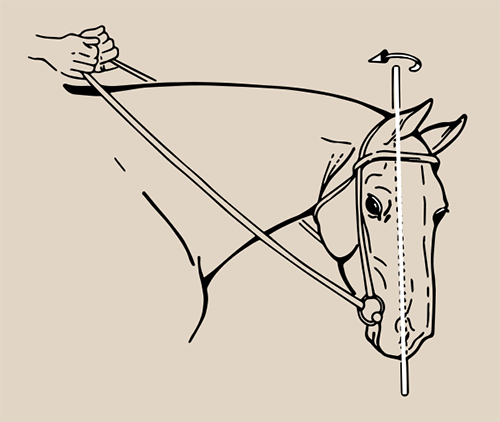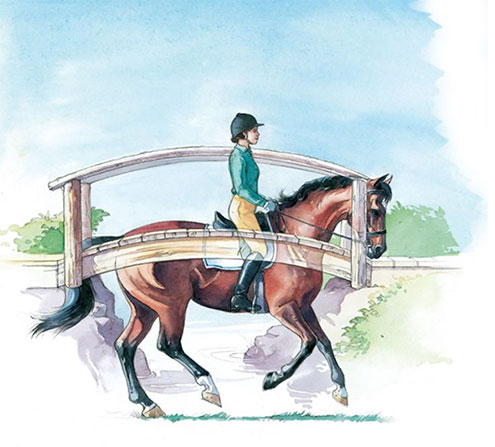Sometimes coaches assume that we know exactly what to do, and we nod, pretending we understand
Have you ever had your instructor yell at you to “Make him rounder!” and weren’t sure what to do? So many times coaches assume that we know exactly how to do the things they are asking and we nod, hoping we could fake it. If this sounds familiar, read on!
Horses have two places that they can round, like the letter ‘C’. One type of roundness is looking at a horse from a birds-eye-view where the body bends through it’s ribcage like a “C”. This is called ‘lateral flexion’. The other, ‘longitudinal flexion’ is from nose to tail over the topline.
Create Longitudinal flexion to get the horse’s hind legs under him, and lift his withers
Now look at your horse from the side or from your trainer’s point of view. Imagine the ‘C’ has fallen forwards and the two tips of the ‘c’ are touching the ground. This is longitudinal flexion, the one that needs to be created first to help get your horse’s hind legs under them, their withers lifting inducing relaxation.
(ILLUSTRATION by Sandy Rabinowitz for Dressage Today)
Think of gently lifting your horse’s withers.
The horse’s body, without rider, naturally moves in a relaxed, longitudinal manner. We try to create that same relaxed movement while carrying a rider on his back, without being a hindrance.
We need to open our bodies to allow the withers to come up, shown in the illustration below.

